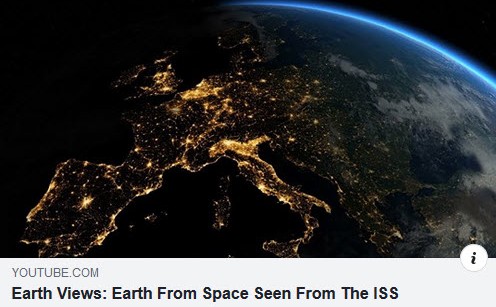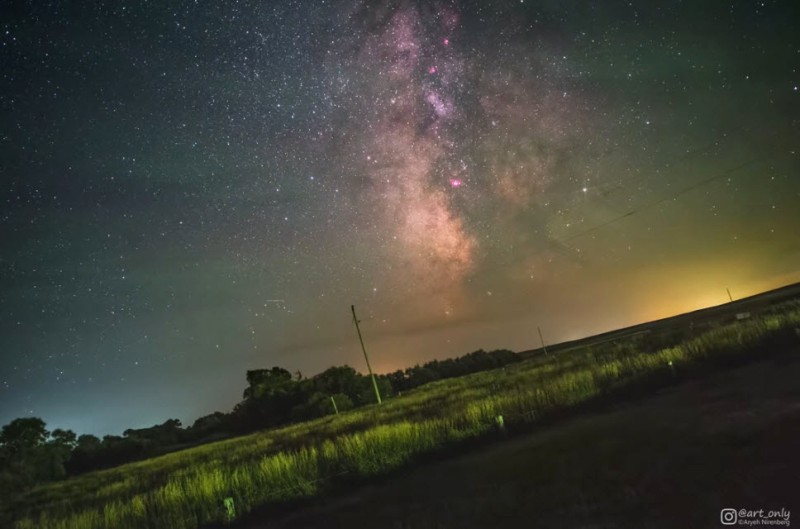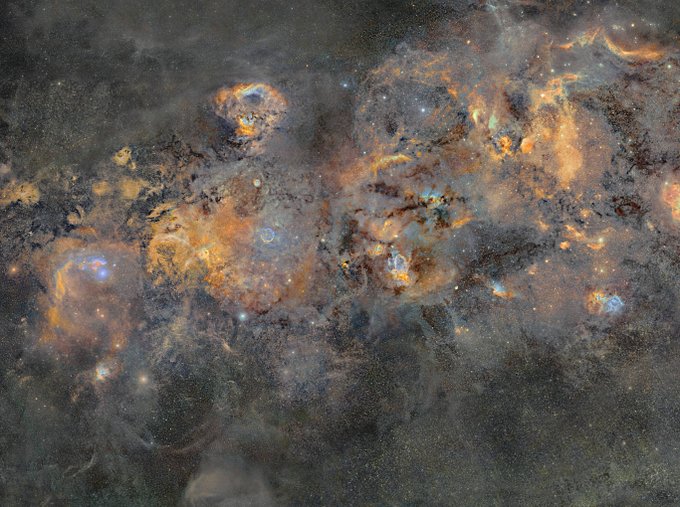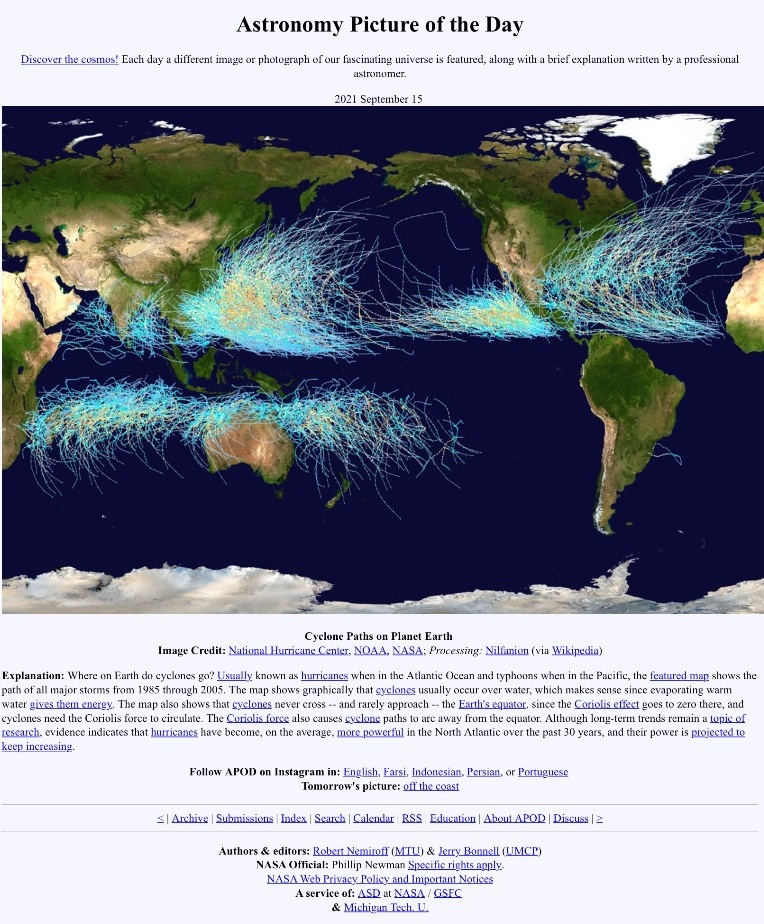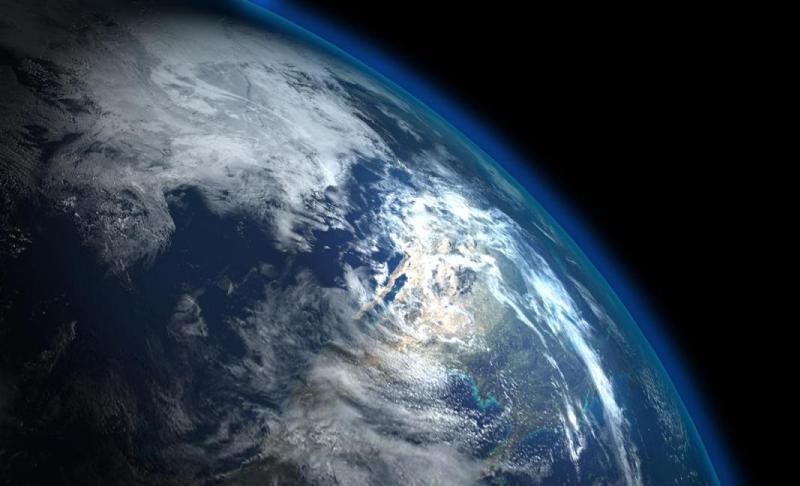Earth from NASA: Difference between revisions
Siterunner (talk | contribs) No edit summary |
Siterunner (talk | contribs) No edit summary |
||
| (25 intermediate revisions by the same user not shown) | |||
| Line 5: | Line 5: | ||
<big><big><big>Watching Planet Earth Roll Thru Space</big></big></big> | <big><big><big>'''Watching Planet Earth Roll Thru Space'''</big></big></big> | ||
<big><big>Earth viewing from the International Space Station</big></big> | <big><big>Earth viewing from the International Space Station</big></big> | ||
Watch .... | |||
[[File:Settings.png]] '''''Settings Suggestion: FULL Screen, 1080p, Room lights off, Music up, lean back and fly''''' | |||
[https://www.youtube.com/watch?v=FG0fTKAqZ5g&list=UUIcA_1j7WQ8VXyygM6qI-fw '''''All Alone in the Night'''''] | |||
[[File:Settings.png]] '''''Set FULL Screen 1080p, lights off, Audio up. Even better, adjust YouTube player setting for HighDef 4K''''' | |||
[https://www.youtube.com/watch?v=GOAEIMx39-w '''''The View Outside My Window'''''] | |||
More .... | |||
* https://www.youtube.com/watch?v=Wfoy_OvNDvw&app=desktop | |||
* https://vimeo.com/55073825 | |||
NASA's "Mission Statement" speaks of the goal of studying Planet Earth for the benefit of all humanity. Today's mission statement highlights “advances in science, technology, aeronautics, and space exploration to enhance knowledge, education, innovation, economic vitality and stewardship of Earth.” | |||
https://www. | Decades of earth science missions beginning in the 1960's have created a [https://www.greenpolicy360.net/w/Category:Earth_Observations new vision and 'planetary awareness']. [https://www.greenpolicy360.net/w/Planet_Citizens,_Planet_Scientists Planet Citizens, Planet Scientists] continue to this day developing new Earth System Science from space and gathering critical data for environmental protection. | ||
The National Aeronautics and Space Act was signed into law on July 29, 1958. | |||
https://www. | In the National Aeronautics and Space Act, which established the agency in 1958, the first objective of the agency was listed as "the expansion of human knowledge of the earth and of phenomena in the atmosphere and space." -- https://www.nasa.gov/offices/ogc/about/space_act1.html | ||
The Space Act has been amended many times since 1958 but these goals have been little changed. In NASA’s Authorization Act for 1985 the expansion of human knowledge “of the Earth” was added to goal 1 -- https://history.nasa.gov/spaceact-legishistory.pdf | |||
~ | |||
"We refer to the mission statement in all our research proposals that go out for peer review, whenever we have strategy meetings," said Philip B. Russell, a 25-year NASA veteran who is an atmospheric chemist at the Ames Research Center in Moffett Field, Calif. "As civil servants, we're paid to carry out NASA's mission. When there was that very easy-to-understand statement that our job is to protect the planet, that made it much easier to justify this kind of work." | |||
Since 1972, when NASA launched the first Landsat satellite to track changes on the earth's surface, the agency has been increasingly involved in monitoring the environment.. | |||
From the original Mission Statement of NASA. -- '''''“To understand and protect our home planet..."''''' | |||
[[File:NASA's continuing vision and mission - as of 2005.png]] | |||
The "understand and protect" phrase was cited repeatedly by James E. Hansen, a climate scientist at NASA... | |||
* https://www.greenpolicy360.net/w/File:Hansen-testimony-1988.jpg | |||
GreenPolicy360 tips its hat too to [[George E. Brown Jr]] who often spoke of the Planet Earth, Earth Science mission of NASA and acted over 30 years to guide and support the nation's first generation of [[Planet Citizens, Planet Scientists]] | |||
Read of GreenPolicy360 Siterunner's friend, Representative George E. Brown. His story is one for the ages... | |||
* https://www.greenpolicy360.net/w/George_E._Brown_Jr | |||
🌎 | |||
<big>'''NASA: Viewing the Home Planet from the International Space Station'''</big> | |||
* https://www.nasa.gov/image-feature/viewing-earth-from-the-space-station | |||
* https://www.youtube.com/nasa/live | |||
International Space Station orbits are approximately 90 minutes. With a 90 minute orbit and 24 hour day, the ISS circles the Earth 16 times a day -- 16 sunrises and 16 sunsets each 'orbital day'. | |||
The ISS passes from periods of night to day every 45 minutes. Depending on the channel you are watching, if live video is unavailable during periods of darkness, other pre-recorded footage may be shown until live transmission resumes when the space station returns to daylight. | The ISS passes from periods of night to day every 45 minutes. Depending on the channel you are watching, if live video is unavailable during periods of darkness, other pre-recorded footage may be shown until live transmission resumes when the space station returns to daylight. | ||
Each channel continuously goes through on/off periods of testing, upgrading and maintenance. | Each video channel continuously goes through on/off periods of testing, upgrading and maintenance. | ||
NASA ISS live streaming is courtesy of www.nasa.gov and its partners. | NASA ISS live streaming is courtesy of www.nasa.gov and its partners. | ||
* https://spaceofficial.com | |||
··················································· | |||
From Planet Citizen Aryeh Nirenberg | |||
[https://www.youtube.com/watch?v=1zJ9FnQXmJI Watch Earth's Rotation Visualized in a Timelapse of the Milky Way Galaxy] | |||
[[File:Earths rotation as we roll thru space.jpg|link=https://www.youtube.com/watch?v=1zJ9FnQXmJI]] | |||
From Planet Citizen JP Metsavainio | |||
[https://www.greenpolicy360.net/w/File:The_Milky_Way.jpg The Milky Way, our Island in Space] | |||
[[File:The Milky Way.jpg]] | |||
| Line 65: | Line 123: | ||
:[http://www.planetcitizens.org '''PlanetCitizens.org'''] | :[http://www.planetcitizens.org '''PlanetCitizens.org'''] | ||
[https://www.greenpolicy360.net/w/Planet_API '''Planet API'''] | |||
:[https://www.greenpolicy360.net/w/Earth_Science_Research_from_Space '''Earth Science from Space'''] | |||
:[[File:Hurricanes - Typhoons via NASA data.png]] | |||
| Line 70: | Line 134: | ||
'''''#EarthObservations''''' | '''''#EarthScience''''' | '''''#EarthObservations''''' | '''''#EarthScience''''' | ||
[[File:'Thin Blue Layer' of Earth's Atmosphere 2.jpg]] | |||
| Line 76: | Line 145: | ||
[[Category:Climate Change]] | [[Category:Climate Change]] | ||
[[Category:Climate Policy]] | [[Category:Climate Policy]] | ||
| Line 91: | Line 156: | ||
[[Category:Earth System Science]] | [[Category:Earth System Science]] | ||
[[Category:Eco-nomics]] | [[Category:Eco-nomics]] | ||
[[Category:Ecology Studies]] | [[Category:Ecology Studies]] | ||
[[Category:Ecoregions]] | [[Category:Ecoregions]] | ||
[[Category:Education]] | [[Category:Education]] | ||
[[Category:Environmental Full-cost Accounting]] | [[Category:Environmental Full-cost Accounting]] | ||
[[Category:Environmental Protection]] | |||
[[Category:Environmental Security]] | [[Category:Environmental Security]] | ||
[[Category:Environmental Security, National Security]] | [[Category:Environmental Security, National Security]] | ||
Latest revision as of 19:26, 28 May 2024
Watching Planet Earth Roll Thru Space
Earth viewing from the International Space Station
Watch ....
![]() Settings Suggestion: FULL Screen, 1080p, Room lights off, Music up, lean back and fly
Settings Suggestion: FULL Screen, 1080p, Room lights off, Music up, lean back and fly
![]() Set FULL Screen 1080p, lights off, Audio up. Even better, adjust YouTube player setting for HighDef 4K
Set FULL Screen 1080p, lights off, Audio up. Even better, adjust YouTube player setting for HighDef 4K
More ....
NASA's "Mission Statement" speaks of the goal of studying Planet Earth for the benefit of all humanity. Today's mission statement highlights “advances in science, technology, aeronautics, and space exploration to enhance knowledge, education, innovation, economic vitality and stewardship of Earth.”
Decades of earth science missions beginning in the 1960's have created a new vision and 'planetary awareness'. Planet Citizens, Planet Scientists continue to this day developing new Earth System Science from space and gathering critical data for environmental protection.
The National Aeronautics and Space Act was signed into law on July 29, 1958.
In the National Aeronautics and Space Act, which established the agency in 1958, the first objective of the agency was listed as "the expansion of human knowledge of the earth and of phenomena in the atmosphere and space." -- https://www.nasa.gov/offices/ogc/about/space_act1.html
The Space Act has been amended many times since 1958 but these goals have been little changed. In NASA’s Authorization Act for 1985 the expansion of human knowledge “of the Earth” was added to goal 1 -- https://history.nasa.gov/spaceact-legishistory.pdf
~
"We refer to the mission statement in all our research proposals that go out for peer review, whenever we have strategy meetings," said Philip B. Russell, a 25-year NASA veteran who is an atmospheric chemist at the Ames Research Center in Moffett Field, Calif. "As civil servants, we're paid to carry out NASA's mission. When there was that very easy-to-understand statement that our job is to protect the planet, that made it much easier to justify this kind of work."
Since 1972, when NASA launched the first Landsat satellite to track changes on the earth's surface, the agency has been increasingly involved in monitoring the environment..
From the original Mission Statement of NASA. -- “To understand and protect our home planet..."
The "understand and protect" phrase was cited repeatedly by James E. Hansen, a climate scientist at NASA...
GreenPolicy360 tips its hat too to George E. Brown Jr who often spoke of the Planet Earth, Earth Science mission of NASA and acted over 30 years to guide and support the nation's first generation of Planet Citizens, Planet Scientists
Read of GreenPolicy360 Siterunner's friend, Representative George E. Brown. His story is one for the ages...
🌎
NASA: Viewing the Home Planet from the International Space Station
- https://www.nasa.gov/image-feature/viewing-earth-from-the-space-station
- https://www.youtube.com/nasa/live
International Space Station orbits are approximately 90 minutes. With a 90 minute orbit and 24 hour day, the ISS circles the Earth 16 times a day -- 16 sunrises and 16 sunsets each 'orbital day'.
The ISS passes from periods of night to day every 45 minutes. Depending on the channel you are watching, if live video is unavailable during periods of darkness, other pre-recorded footage may be shown until live transmission resumes when the space station returns to daylight.
Each video channel continuously goes through on/off periods of testing, upgrading and maintenance.
NASA ISS live streaming is courtesy of www.nasa.gov and its partners.
···················································
From Planet Citizen Aryeh Nirenberg
Watch Earth's Rotation Visualized in a Timelapse of the Milky Way Galaxy
From Planet Citizen JP Metsavainio
The Milky Way, our Island in Space
Planet Citizens, Planet Scientists
Our Time Is Now
#Earth360 | #EarthMonitoring |
#EarthObservations | #EarthScience
○
- Climate Change
- Climate Policy
- Digital Citizen
- Earth360
- Earth Imaging
- Earth Law
- Earth Observations
- Earth Science
- Earth Science from Space
- Earth System Science
- Eco-nomics
- Ecology Studies
- Ecoregions
- Education
- Environmental Full-cost Accounting
- Environmental Protection
- Environmental Security
- Environmental Security, National Security
- EOS eco Operating System
- ESA
- Externalities
- Fisheries
- Forests
- Food-Related Policies
- Global Security
- Global Warming
- ISS
- Land Ethic
- Maps
- NASA
- Natural Resources
- New Definitions of National Security
- New Space
- Oceans
- Ocean Ecosystem
- Ocean Science
- Ocean Sustainability
- Planet Citizen
- Planet Citizens
- Planet Scientist
- Planet Citizens, Planet Scientists
- Sea-Level Rise & Mitigation
- Solar Energy
- Strategic Demands
- Sustainability
- Sustainability Policies
- ThinBlueLayer
- Threat Multiplier
- US Environmental Protection Agency
- Whole Earth
- World Wide Web
- Atmospheric Science
- Biogeosciences
- Cryosphere
- Geophysics and Geochemistry
- Mineralogy
- Geology
- Geophysics
- Hydrology
- Planetary Science
- Space Science and Space Physics
